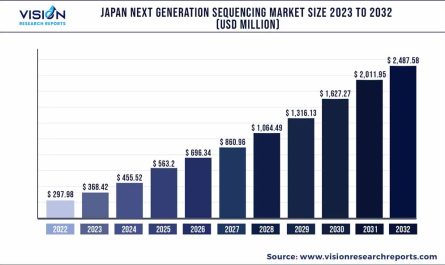The Europe astaxanthin market was estimated at USD 0.77 billion in 2023 and it is expected to surpass around USD 3.94 billion by 2033, poised to grow at a CAGR of 17.72% from 2024 to 2033.

Key Pointers
- The Germany astaxanthin market led the market with the largest market share of 21% in 2023.
- By Source, the natural astaxanthin segment captured the maximum market share of 57% in 2023.
- By Product, the dried algae meal or biomass segment generated the maximum market share of 26% in 2023.
- By Product, the softgel segment is anticipated to grow at the noteworthy CAGR of 18.23% from 2024 to 2033.
- By Application, the aquaculture and animal feed segment captured the maximum market share of 47% in 2023.
- By Application, the nutraceuticals segment is estimated to expand the fastest CAGR of 18.64% from 2024 to 2033.
What is Astaxanthin?
Astaxanthin is a powerful antioxidant belonging to the carotenoid family. It’s what gives salmon, shrimp, and flamingos their distinct pinkish-red color. Renowned for its robust health benefits, astaxanthin is increasingly gaining attention across various industries.
Get a Sample@ https://www.visionresearchreports.com/report/sample/41403
Applications of Astaxanthin
Astaxanthin is a versatile compound used in various industries due to its potent antioxidant properties. In dietary supplements, it’s valued for enhancing immune function and reducing oxidative stress. The cosmetics industry incorporates it for its anti-aging benefits, such as reducing wrinkles and improving skin elasticity. In animal feed, especially in aquaculture, it enhances the coloration and health of fish and crustaceans. Additionally, the food and beverage industry utilizes astaxanthin as a natural colorant and nutrient enhancer, appealing to health-conscious consumers looking for natural alternatives
Market Trends
Increasing Demand for Natural Products
There is a growing consumer preference for natural and clean-label products. This trend is driving the demand for naturally sourced astaxanthin over synthetic alternatives.
Innovations in Product Formulation
Companies are continuously innovating to create more effective and appealing astaxanthin products. This includes developing new delivery forms like gummies, soft gels, and topical applications.
Consumer Awareness and Education
Efforts to educate consumers about the benefits of astaxanthin are paying off. Increased awareness is leading to higher demand and market growth.
Challenges in the Market
Production Costs
High production costs are a significant challenge. Natural extraction processes are expensive, impacting the pricing and profitability of astaxanthin products.
Competition from Synthetic Alternatives
Synthetic astaxanthin, while less preferred by consumers, offers a cheaper alternative. This creates competitive pressure on natural astaxanthin producers.
Supply Chain Issues
Supply chain disruptions can impact the availability of raw materials and finished products, posing a challenge for market stability.
Opportunities for Growth
Research and Development
Investing in R&D can lead to new product innovations and applications, driving market growth. Companies are exploring novel uses of astaxanthin in various sectors.
Expansion into New Markets
Expanding into emerging markets presents significant growth opportunities. Increasing disposable incomes and health awareness in these regions are driving demand for astaxanthin products.
Strategic Partnerships
Collaborations and partnerships can enhance market reach and innovation capabilities, providing a competitive edge.
Competitive Analysis
Major Competitors
Major players like BASF SE, Algatechnologies Ltd., and Cyanotech Corporation dominate the market. Their extensive product portfolios and strong market presence make them formidable competitors.
Market Share Analysis
These companies hold a significant market share, driven by their continuous innovation and strategic initiatives.
SWOT Analysis
- Strengths: High-quality products, strong R&D capabilities, extensive distribution networks.
- Weaknesses: High production costs, dependency on natural sources.
- Opportunities: Growing consumer demand, expansion into new markets, technological advancements.
- Threats: Competition from synthetic alternatives, regulatory challenges, supply chain issues.
Read More@ https://www.heathcareinsights.com/asia-pacific-astaxanthin-market/
Europe Astaxanthin Market Key Companies
- Algalíf Iceland hf.
- ALGAMO
- BASF SE
- DSM (dsm-firmenich)
- Nutri-Link
- The Synergy Company
- Sea & Sun Organic GmbH
- Fraunhofer CBP
- VALENSA INTERNATIONAL
- AstaReal
Recent Developments
- In March 2024, BGG WORLD unveiled its new global headquarters in Switzerland, marking a significant milestone in the company’s global expansion strategy.
- In January 2024, AstaReal, a pioneer in the natural astaxanthin for human consumption market, launched a revamped version of its product Astaxin for consumers in Sweden and Norway, signaling its commitment to innovation and meeting the evolving needs of its customers.
Europe Astaxanthin Market Segmentation:
By Source
- Natural
- Yeast
- Krill/Shrimp
- Microalgae
- Others
- Synthetic
By Product
- Dried Algae Meal or Biomass
- Oil
- Softgel
- Liquid
- Others
By Application
- Nutraceuticals
- Cosmetics
- Aquaculture and Animal Feed
- Food
- Functional Foods & Beverages
- Other Traditional Food Manufacturing Applications
- Others
By Country
- Germany
- France
- Italy
- UK
- Spain
- Russia
- Sweden
- Denmark
Buy this Premium Research Report@ https://www.visionresearchreports.com/report/checkout/41403
You can place an order or ask any questions, please feel free to contact sales@visionresearchreports.com| +1 650-460-3308
Web: https://www.visionresearchreports.com/
Blog: https://www.novaoneadvisor.com/

